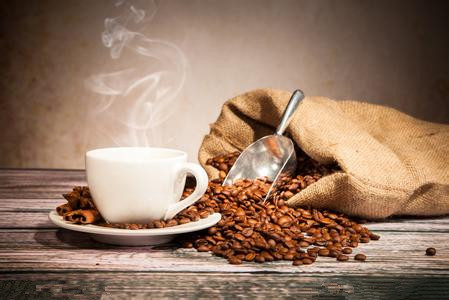Introduction to the types of high-quality coffee beans and coffee

Blue Mountain Coffee
Produced in Jamaica, the aroma is very full-bodied, well-balanced, with a long-lasting fruit flavor. The real Blue Mountain Coffee is one of the best grown coffee in the world. Almost everyone knows that it is the most expensive coffee in the world. The 2100-meter-high Blue Mountains across Jamaica, with cool weather, foggy, frequent rainfall and rich land Rain Water, provide a unique ideal place for coffee growth. High-quality fresh Blue Mountain coffee has a long-lasting flavor and a lingering aftertaste.
Colombian Coffee
The world's largest producer of high-quality coffee, traditional deep-roasted coffee has a strong and memorable taste. Colombian coffee is one of the few original coffee sold in the world under the name of the country, which is the world's largest exporter of Arabica coffee beans. Rich in nutrients, some with nutty flavor. It is often described as having a silky taste. Of all the coffee, it has the best balance, soft and smooth taste, and can be drunk at any time. The most important production area in Colombia is referred to as MAM (the initials of Medellin, Armenia and Manizales), and most of Colombia's top coffee for export comes from MAM. Coffee in Medellin is of the best quality and high price, characterized by full grains, rich nutrition, rich aroma and moderate acidity.
Indonesian coffee
Coffee is produced throughout Indonesia, and Java occupies an extremely important position in the history of coffee. The best growing areas are in Java, Sumatra, Sulawesi and Frances. On the whole, Indonesian coffee has a strong taste, mellow taste and good acidity. Java produces exquisite aromatic coffee with relatively low acidity, delicate taste and good balance; Sumatra is heavy, with syrup and chocolate flavor, suitable for drinking after meals. And Sumatra mandheling is known as the world's fullest coffee beans, its unique fragrant taste, slightly acidic taste, quality can be said to be the first in the world. In addition, Arabian coffee produced in Java is the favorite of Europeans, which is sweet in bitterness and sour in the middle of it, which lasts for a long time.
Costa Rican coffee
The coffee beans produced at the high latitudes of Costa Rica are famous in the world, full-bodied, mild in taste, but extremely sour. The coffee beans here have been carefully processed, which is why they have high quality coffee.
The famous coffee is produced by Central Plateau in the central plateau, where the soil consists of successive layers of volcanic ash and dust.
Brazil Coffee
The largest coffee producer, which accounts for 1/3 of the world's coffee consumption, accounts for 1/3 of the world's coffee consumption and has a place in the global coffee market, although Brazil faces several times more natural disasters than other regions. but its acreage is enough to make up for it.
There are many kinds of coffee here, but its industrial policy is large and cheap, so there is not much premium coffee, but it is a good choice for mixing other coffees.
One of the most famous is Sandos Coffee, which tastes mellow and neutral. It can be boiled directly or mixed with other kinds of coffee beans to form a mixed coffee. It is also a good choice.
Hawaiian Kona Coffee
To visit Hawaii, in addition to the beautiful beach, don't forget the Hawaiian coffee bean-Kona. The palate is sweet with the acidity of a pleasant wine, very special. It produces Kona on the southwest coast of Hawaii and is the most traditional and famous coffee in Hawaii.
However, because the output here is not high, the cost is surprisingly high, and the demand for individual coffee in the United States and other places is increasing, so its unit price is not only getting higher and higher, but also not easy to buy.
Yemeni coffee
Yemeni mocha coffee was once all the rage, blowing a whirlwind of mocha all over the world. It is slightly alcoholic, spicy, different and must be tasted. Mocha coffee has small particles, high acidity, strange and indescribable spicy taste, and a hint of chocolate can be distinguished in the taste. Mocha is the soul of other coffee beans or mixed coffee beans.
Angolan coffee
This is the fourth largest coffee industry in the world, but it produces only a small amount of Arabica coffee, which is of high quality, but unfortunately, its annual output is extremely unstable due to its political unrest.
Ethiopian coffee
The hometown of Arabica coffee, growing up at high latitudes, needs a lot of manual care. There is the famous Esopiamoka, which has a sour taste similar to that of wine, fragrant and productive.
Unfortunately, some farmers still do not understand the benefits of picking fruit and allow them to fall behind and pick it up from the ground, but in recent years, due to the continuous expansion of the market, coffee industry is committed to improving harvesting and processing methods, hoping to increase production.
Peruvian coffee
Peruvian Coffee, a rising star, is gradually expanding its popularity and entering the world. It is mostly planted in high altitude areas, the planned planting greatly increases the yield, the taste is mellow, the acidity is just right, and more and more people like it.
Important Notice :
前街咖啡 FrontStreet Coffee has moved to new addredd:
FrontStreet Coffee Address: 315,Donghua East Road,GuangZhou
Tel:020 38364473
- Prev

Basic knowledge of fancy coffee
22. Oulei iced coffee: production method (for two) 1. Add 16g coffee powder and 260cc water to Italian steam to get espresso. You can also get espresso by brewing 40g coffee powder (non-Italian brewing utensils) with 120cc water. two。 First add the appropriate sugar to the espresso, then prepare two glasses and fill them with ice. 3. It will be made in advance.
- Next

You can lose weight without going on a diet. Coffee diet
Caffeine weight loss effect caffeine contained in coffee has a weight loss effect, only a few cups of coffee a day can achieve a better weight loss effect. This is a very good way to lose weight for coffee fans. After the caffeine in coffee is absorbed by the body, it moves in the body and causes the body to secrete epinephrine, which promotes the division of fat cells in the blood.
Related
- Beginners will see the "Coffee pull flower" guide!
- What is the difference between ice blog purified milk and ordinary milk coffee?
- Why is the Philippines the largest producer of crops in Liberia?
- For coffee extraction, should the fine powder be retained?
- How does extracted espresso fill pressed powder? How much strength does it take to press the powder?
- How to make jasmine cold extract coffee? Is the jasmine + latte good?
- Will this little toy really make the coffee taste better? How does Lily Drip affect coffee extraction?
- Will the action of slapping the filter cup also affect coffee extraction?
- What's the difference between powder-to-water ratio and powder-to-liquid ratio?
- What is the Ethiopian local species? What does it have to do with Heirloom native species?

